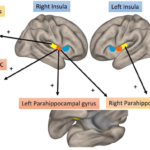
During one 36-month study evaluating therapy discontinuation, 14–17% of RA patients had major flares.
Maya2008/shutterstock.com
WASHINGTON, D.C.—Clinical aspects of managing patients with rheumatoid arthritis (RA) in remission were discussed by a panel of experts at the 2016 ACR/ARHP Annual Meeting during the session titled Rheumatoid Arthritis—Clinical Aspects IV: Managing Patients in Remission. Among the issues raised were strategies to taper or discontinue biologic therapies, as well as clinical predictors of prolonged disease control after discontinuing biologics.
Tapering or Discontinuing Biologics
Aatke van der Maas, MD, a rheumatologist at Sint Maartenskliniek, Nijmegen, The Netherlands, opened the session by presenting long-term outcomes of the Dose Reduction Strategies of Subcutaneous TNF Inhibitors (DRESS) trial, a randomized, controlled study in which patients with RA in remission were treated by either a disease activity-guided dose-reduction (DR) strategy for the tumor necrosis factor inhibition (TNFi) agents adalimumab or etanercept or usual care (UC) (nontapering tight control).1
Designed as a noninferiority study, short-term results at 18 months showed that DR was noninferior to UC in a cohort of 180 patients, of which 121 were allocated to DR and 59 to UC.1 All patients included in the trial had low disease activity (Disease Activity Score [DAS] 28 1
During the session, Dr. van der Maas reported on an extension phase of the trial that evaluated whether the results seen at 18 months were sustained for up to three years.2 A total of 172 patients (115 DR and 57 UC) were included. Based on an intention-to-treat analysis, the study showed that the safety and efficacy of the DR strategy could be maintained for up to three years. The study found comparable outcomes between patients in the DR and UC groups in terms of cumulative incidences of major flares (10% and 12%, respectively) during the extension phase of 18 to 36 months. During the entire 36-month-long study, 17% and 14% patients in the DC and UC groups, respectively, had a major flare.
The study also showed that 33/115 (29%) patients in the DR group were able to sustain the reduction in TNFi dose at 36 months, and 19/115 (17%) were able to discontinue TNFi at 36 months. Of the 32/49 patients in the UC group who attempted a dose reduction, 19/49 (39%) were successful and 7/49 (14%) discontinued TNFi at 36 months.
In addition, the study showed no difference in quality-of-life measurements between the two treatment groups nor in radiological progression or adverse events. The study did show, however, a considerable savings in cost—with a mean cost savings over three years of €13.451 (approximately $14,506 U.S.) per patient.
Discontinuation of Biologics in Practice
To determine how a dose-reduction or discontinuation strategy of biologic therapy in patients with RA in remission would work in clinical practice, Cecilie Heegaard Brahe, MD, at the Copenhagen Center for Arthritis Research, Center for Rheumatology and Spine Diseases, Rigshospitalet, Glostrup, Denmark, presented one-year follow-up results of a guideline-directed longitudinal cohort study. The study looked at the clinical implementation over two years of a predefined algorithm for DR or discontinuation of biologic therapy in a cohort of 143 patients from five departments of rheumatology in the capital region of Denmark.3
The algorithm called for patients to receive two-thirds of the standard dose of a biological drug at baseline, half of the standard dose after four months and dose discontinuation after eight months. If a patient experienced a flare (e.g., DAS28 ≥2.6 and DAS28 ≥1.2 since baseline or erosive progression based on imaging), the drug taper was stopped and the dose escalated to the previous dose to regain remission.
Patients included in the study had a DAS ≤2.6 for one year or more, no radiographic progression for one year or more and had not been treated with glucocorticoids within the past six months. Of the 143 patients, most were female (65%) with an average age of 59 years and disease duration of 11 years. Most patients were receiving their first biologic (62%) and were treated with adalimumab (31%), etanercept (28%) or infliximab (27%). Fewer patients were treated with tocilizumab (8%), certolizumab (3%), golimumab (2%) and abatacept (1%).
‘Fifty percent of RA patients in stable, low disease activity while on TNFi can effectively & safely stop TNFi.’ —Dr. Harald Vonkeman
Reporting on the results of the guideline implementation after one year, Dr. Heegaard Brahe said that 66% of the patients received a reduced dose of a biologic.3 Dose reduction was stopped in 101 patients (71%) due to a flare, and all of these patients received escalated doses to regain remission. At one year, 49 patients (34%) had received the full biological dose, 28 (20%) had received two-thirds of a dose, 36 (25%) had received half a dose, and 30 (21%) had discontinued biological treatment.
When assessing potential clinical baseline predictors of flare during the first year, the study found that being female and having longer disease duration were associated with increased risk of flare.
Saying that the study seems to show the feasibility of tapering of biological therapies in RA patients in remission in routine clinical practice, Dr. Heegaard Brahe said the study findings highlighted the “need to identify more predictors for successful tapering and for flare, such as MRI, ultrasound and biomarkers.”
Clinical Predictors of Prolonged Disease Control
Harald Vonkeman, MD, PhD, of the Rheumatology Center Twente, Medisch Spectrum Twente & Twente University, in Enschede, The Netherlands, next presented the results of a substudy of the Dutch national POET study that looked at potential clinical predictors of prolonged disease control after discontinuation of TNFi therapy.4 The study is a multicenter, open-label randomized controlled trial that assessed whether patients with established RA in remission or with stable low disease activity can safely and effectively stop their TNFi therapy.5
In the substudy, Dr. Vonkeman and colleagues looked at whether it is possible to predict successful TNFi discontinuation. The study included 531 patients who were randomized to stop TNFi therapy in the POET study, the majority of whom were female (67.4%) with a mean age of 59.8 years and disease duration of at least 10 years. Most of the patients were on their first TNFi agent (86.5%) and most were also receiving methotrexate (87%). Prolonged acceptable disease control was indicated by not needing to restart TNFi treatment over 12 months. Overall, the study found that 50.1% of patients remained in low disease activity or remission over 12 months.
Based on multivariate analysis, the study found that potential clinical predictors of prolonged acceptable disease control after TNFi discontinuation included the type of TNFi used (antibody vs. receptor antagonist), having a short disease duration (less than 10 years) and a Multi-Biomarker Disease Activity (MBDA) score of ≤44.
To place this finding in a clinical context, Dr. Vonkeman described a patient for whom it is likely that TNFi therapy can be successfully stopped: someone who is receiving a TNFi antibody and has a short disease duration and low MBDA score. Dr. Vonkeman said that 70% of patients who fit this description have not had to restart a TNFi after one year of follow up at their clinic.
In contrast, he said, patients who use a receptor antagonist, have longstanding disease, and a high MBDA score are less likely to successfully stop TNFi therapy. In his clinic, only 20% of these patients have not restarted TNFi therapy after one year of follow-up.
Dr. Vonkeman said the most important message to clinicians is “that 50% of the RA patients in stable, low-disease activity while on TNFi can effectively and safely stop TNFi,” and that “the clinical predictors of successfully stopping TNFi are the type of TNFi (antibody vs. receptor antagonist), short disease duration of less than 10 years and an MBDA score of <44.”
Dose-Interval Prolongation of Adalimumab
In a presentation not specifically aimed at patients with RA in remission, but all RA patients, Merel J. l’Ami, MSc, a PhD student at Amsterdam Rheumatology and Immunology Center in Reade, Amsterdam, The Netherlands, presented the results of a study that looked at the effect of prolonging the dosing interval of adalimumab in patients with RA and with high adalimumab serum concentration.6
Citing data showing a wide variation in adalimumab serum concentrations exists in RA patients treated with adalimumab 40 mg every other week, Ms. l’Ami said this is contrary to the one-size-fits-all therapy that is prescribed on the labels for such agents as adalimumab. She also cited data showing that the relationship between adalimumab concentrations and clinical response flattens when adalimumab concentrations exceed 5 µg/mL.7,8 “This shows that the maximum treatment response is achieved with concentrations of 5–8 µg/mL,” she said.
Given this, l’Ami and colleagues undertook the open-label, randomized controlled trial to test the hypothesis that prolonging the dosing interval of adalimumab to 40 mg every three weeks in RA patients with trough concentration of >8 µg/mL would not increase disease activity in these patients.
The study found that being female & having longer disease duration were associated with increased risk of flare.
The study included 54 patients randomized to dose-interval prolongation (adalimumab 40 mg every three weeks) (n=27) or standard dosing (40 mg every two weeks) (n=27). All patients in the trial had received adalimumab treatment for RA for at least 28 weeks and had a trough adalimumab level of >8 µg/mL.
At the 26-week follow-up, no clinically relevant change was found in the primary outcome of the study, DAS28, in patients who received the dose-interval prolongation treatment compared with standard dosing.
“We have one important message,” said Ms. l’Ami. “Many patients are overtreated with standard dose of adalimumab. By measuring the adalimumab concentration after 28 weeks of adalimumab treatment, you can identify patients who are overtreated and prolong the dose-interval to every three weeks without a change in disease activity.”
Mary Beth Nierengarten is a freelance medical journalist based in Minneapolis.
References
- den Broeder AA, van Herwaarden N, van der Maas A, et al. Dose Reduction strategy of subcutaneous TNF inhibitors in rheumatoid arthritis: Design of a pragmatic randomized noninferiority trial, the DRESS study. BMC Musculoskelet Disord. 2013 Oct 24;14:299.
- den Broeder AA, Bouman CAM, van den Hoogen FHJ, et al. Long-term outcomes after disease activity guided tapering of tumor necrosis factor inhibition in rheumatoid arthritis: 3 year data of a randomized controlled pragmatic non inferiority strategy study [abstract 3011]. Arthritis Rheumatol. 2016;68(suppl 10).
- Brahe CH, Krabbe S, Østergaard M, et al. Dose reduction or discontinuation of biological therapy in patients with rheumatoid arthritis in remission—1-year results of a guideline-directed longitudinal cohort study [abstract 3013]. Arthritis Rheumatol. 2016;68(suppl 10).
- Ghiti Moghadam M, Vonkeman HE, ten Klooster PM, et al. Clinical predictors of TNF-inhibitor free disease control in patients with rheumatoid arthritis after stopping TNFi treatment: Results from a Dutch multicentre pragmatic open-label randomized controlled trial [abstract 3012]. Arthritis Rheumatol. 2016;68(suppl 10).
- Ghiti Moghadam M, Vonkeman HE, ten Klooster PM, et al. Stopping tumor necrosis factor inhibitor treatment in patients with established rheumatoid arthritis in remission or with stable low disease activity: A pragmatic multicenter, open-label randomized controlled trial. Arthritis Rheumatol. 2016;68(8):1810–1817.
- l’Ami MJ, Marsman AF, Krieckaert CL, et al. Tapering of adalimumab based on therapeutic drug monitoring in rheumatoid arthritis [abstract 3014]. Arthritis Rheumatol. 2016;68(suppl 10).
- Pou MF, Krieckaert CL, Nurmohamed MT, et al. Key findings towards optimising adalimumab treatment: The concentration-effect curve. Ann Rheum Dis. 2015 Mar;74(3):513–518.
- Center for Drug Evaluation and Research. Clinical Pharmacology and Biopharmaceutics Review(s). Food and Drug Administration. 2002; pp. 51–54.


